Drosera anglica temperate formsDrosera anglica, also known as the Great sundew or the English sundew, “occurs in Europe, North America, and Japan” (Slack 128). See distribution map at bottom left. Although Drosera anglica is primarily found in temperate climates in the Northern Hemisphere, there are two locations in Hawaii where this species occurs as a tropical sundew. D. anglica originated from a diploid hybrid between D. linearis and D. rotundifolia. The temperate forms of D. anglica require dormancy, but are still very easy to grow- especially outdoors. |
|
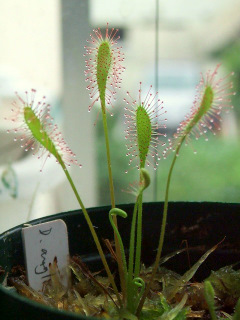 Drosera anglica (Sarobetsu) 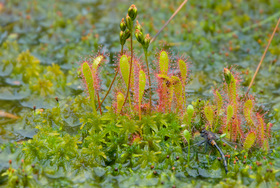 Drosera anglica growing in sopping wet sphagnum in habitat at Mustasuo, Hausjärvi, Southern Finland. Photo used with permission from Tero Laakso. 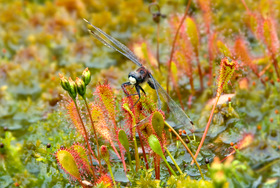 White-faced Darter caught on the English sundew, in habitat at Mustasuo, Hausjärvi, Southern Finland. Photo used with permission from Tero Laakso. 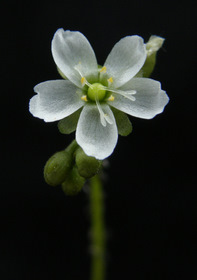 Drosera anglica flower by Rosťa Kracík 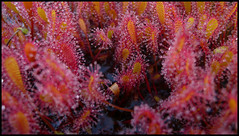 D. anglica in habitat by sami kuosmanen 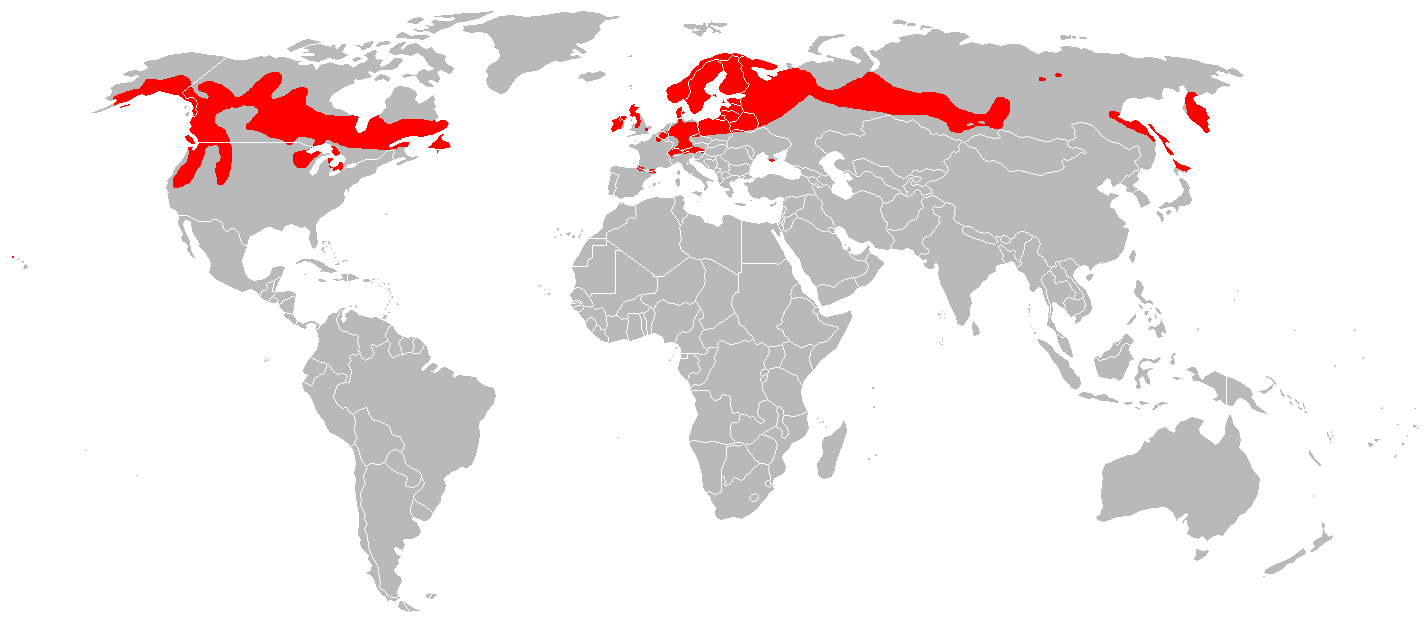 Drosera anglica distribution map by Noah Elhardt |
Media: Not picky. live/dry sphagnum,
peat, or a peat/sand mix are possibilities. Remember
to rinse your media before you use it.
Temperature: approximately 18-25 (roughly
66-80+) degrees C during the growth period. Propagation Techniques (click
here to learn more about propagating sundews) Seed: Cold
Stratification is required. Drosera anglica is generally very easy to germinate, especially if fresh seed is
used. Leaf-cuttings: very
easy. Place on long-fibered sphagnum, or use the water floating method. Place directly under lights for the
fastest, highest success rate. A dim windowsill will also work, but it will
take a bit longer. Follow the guidelines on this page to speed up the growth of the plantlets. Stem cuttings: should
work well on established plants, but I have not tried this before. Visit the stem
cutting article for more detailed information. Root cuttings: work pretty well, but only use the thickest, largest roots. Divisions: easy. D. anglica tends to form clumps over time. It is safest to separate clumped Drosera anglica once they’ve formed hibernacula in the fall. Smaller plantlets can be easily transplanted, and can tolerate root disturbance quite well, so divisions can be taken easily at this stage (as long as you are somewhat careful). Older plants can also be transplanted if you’re careful, but they have long, sometimes thin roots, which can break easily. |
References: Slack, Adrian. Carnivorous Plants. Cambridge: The MIT Press, 2000.
Additional Questions or Suggestions?
Contact me at: sundewman(at)yahoo.com